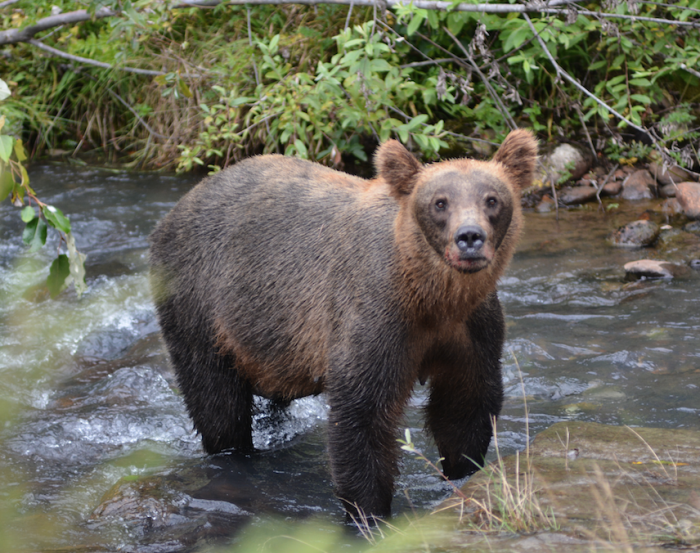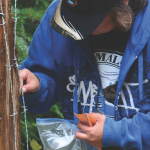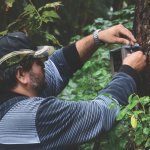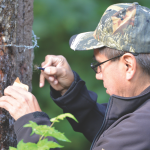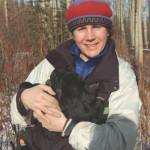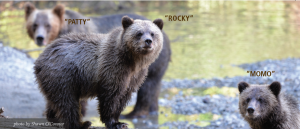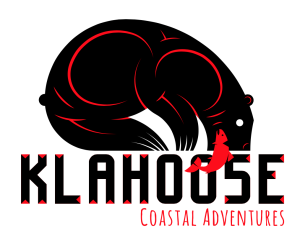The Bear Facts
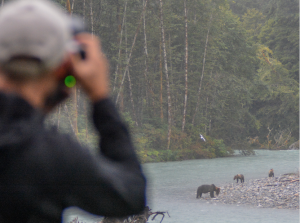 Words and photos by Tricia Thomas
Words and photos by Tricia Thomas
Tourists from around the world are flocking to viewing sites at Bute and Toba Inlets on BC’s central coast to see grizzly and black bears in their natural habitats feeding on returning salmon.
Homalco Wildlife Tours has been guiding visitors for years to the nation’s traditional territory on the Orford River, halfway up Bute Inlet. And now another Naut’sa mawt Tribal Council nation has launched Klahoose Coastal Adventures for whale and bear watchers in Toba Inlet just north of Bute.
Sentinel photographer Tricia Thomas recently joined a journey to Bute to see what all the excitement is about and to learn about on-going research into the bears and their lifestyles.
Video Cameras mounted on trees are contributing towards research on bears around the Orford River and visitors will soon learn more about one family that includes Patty, Momo and Rocky.
While tourists take in stunning sights of bears feasting on coho and chum salmon, a biologist working for Homalco First Nation is leading a team gathering samples of bear hair and studying video footage of the animals. Homalco Wildlife Tours wanted to learn more about the bears that live around Bute. Coast Opportunity Funds helped pay for a biologist to carry out noninvasive research on the number of bears in the area, how they are related and what they do when they’re not fishing.
Lana Ciarniello of Aklak Wildlife Consulting began work in early spring tracking the grizzly trails around the Orford and Algard Creek and up into sub-alpine areas above the inlet. The bears’ marked trees and beds have been photographed and recorded. Bears follow the same trails, Ciarniello said, often stepping in their own tracks repeatedly throughout the season, which creates an elongated footprint – sometimes mistaken for other tracks.“They believe that is where the legend of the Sasquatch came from,” she said.
To count and identify bears, hair samples are collected from rubbing trees and sent for DNA analysis that reveals gender. To determine ages, cameras are attached to trees so bears can be seen rubbing. Matching the level of the marks to the samples and comparing with the video footage gives information on a bear’s age. The recently identified family includes Patty (black triangle on her head), Momo (black stripe) and Rocky (black eye).
This up-close-and-personal information about the bears’ behaviour and relationships will be shared on tours and compiled into a booklet for visitors. Researchers are also gathering information on visitor use and whether it is affecting the bears. When not watching the bears, guests can learn more about the Homalco traditional territory at the nearby information centre. Displays tell the stories of Orford Bay, the settlement at Church House (Aupe) and other significant places for the Xwemalhkwu (Homalco) people. Woven cedar hats, baskets, carvings and drums are also on view.
Klahoose Launches New Venture
Across the water, in their territory around Yekwamen (Toba Inlet), Klahoose First Nation has recently launched a new ecotourism venture with partner, Aboriginal Journeys, offering Whale Watching and Grizzly Bear Tours. Klahoose Coastal Adventures is the latest addition to the Nation’s many economic development operations.
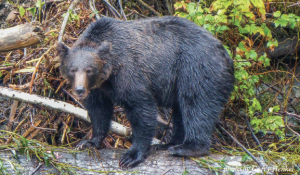 Many Klahoose members have been involved with the project, from research and design to guiding tours and leading cultural programs. Included in the tour is the Memorial Pole, which stands to protect the people of the Yekwamen Valley. The abundant wildlife will thrill visitors to these pristine shores in a unique cultural adventure with the Klahoose People.
Many Klahoose members have been involved with the project, from research and design to guiding tours and leading cultural programs. Included in the tour is the Memorial Pole, which stands to protect the people of the Yekwamen Valley. The abundant wildlife will thrill visitors to these pristine shores in a unique cultural adventure with the Klahoose People.
Homalco Wildlife Tours: www.thebearsofbute.com
Visit Klahoose First Nation: www.klahoose.org


